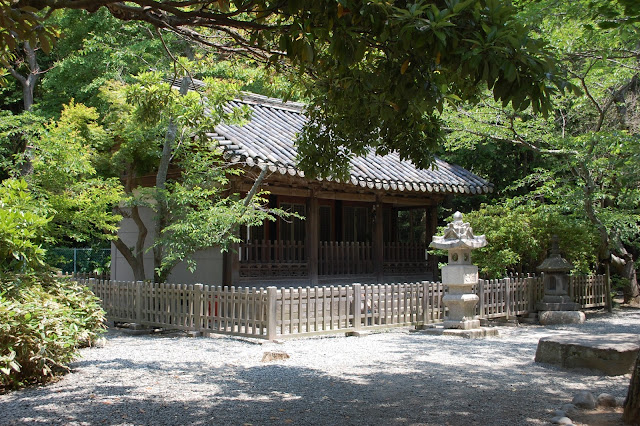Today, we visited the town of Kamakura. Although is it a very small city, it is a very popular destination for tourists foreign and domestic. Here, there are about 13 different temples and unfortunately, we were not able to see them all.
The first place we visited was The Great Buddha of Kamakura (Kamakura Daibutsu). This is located in the Kotokuin Temple. Before you can enter the temple, you first must cleanse you hands of all impurities.
The complete area of this temple is not very big. The real attraction is the Buddha statue itself.
The Great Buddha statue is a bronze statue of Amida Buddha. The statue was cast in 1252 and originally located inside a big temple hall but due to many typhoons and a tidal wave in the 14th and 15th centuries, the hall was destroyed may times over. So, since 1495, the Buddha has been standing in the open air.
Behind the Great Buddha was the Kangetsudo and the Kannon Statue that is housed within. The Kangetsudo (Moon Viewing Hall) was decorated in red and blue (the Korean royal colors) because it was formally located in the royal palace of the Joseon dynasty in Seoul, Korea. It was donated to Kotokuin in 1924. As the temple was designated as the 23rd sacred place of the Kannon, a wooden Kannon statue said to have been made in the late Edo period is enshrined inside.
Also here at the Kotokuin Temple, I caught a picture of the biggest bee/hornet/wasp that I have ever seen in my life. This picture is real. I did not photoshop this picture.
The next temple we visited was the Hasedera Temple. This is most famous for its statue of Kannon, the goddess of mercy. The statue shows Kannon with eleven heads, each representing a characteristic of the goddess. The temple's main buildings are built further up the hill.
Along the way stands the Jizo-do Hall with hundreds of small statues of the Jizo Bodhisattva (saints) who helps the souls of dead children to reach the paradise.

Next to the Kannon-do Hall stands the Amida-do Hall, which exhibits an almost three meter tall golden statue of Amida Buddha.
Hasedera is practically built on a slope of a hill with allot of trees and plants. There are very pretty gardens and water ponds found once you enter the temple area.
Also in this area they are large birds called "kites." These birds apparently will swoop down on people just to get to their food. There were many warning signs around to remind the visitors about these birds.
There's one now.
The next place we visited was the Tsurugaoka Hachimangu, Kamakura's most important shrine. It was founded by Minamoto Yoriyoshi in 1063 and moved to its current site in 1180 by Minamoto Yoritomo, the founder and first shogun of the Kamakura government.
The shrine's entrance way
Below is the "Maiden", a stage for dance, music performances and wedding ceremonies.
A wedding ceremony was being performed while we were there.
The Main Hall
After we left Tsurugaoka Hachimangu, we took a long walk to our next destination. The walking wasn't that bad, it was just the warm weather that made it tough.
The next place that we visited was the Kenchoji Temple. Kenchoji is the first of Kamakura's five Zen temples. It is the oldest Zen temple in Kamakura founded in 1253 by the ruling regent Hojo Tokiyori during the Kencho Era. The first priest was Rankei Doryu, a Zen priest from China.
Sammon, the main gate.
The statue of Jizo Bodhisattva
Hojo - Kenchoji main hall
The Zen garden behind the Hojo
After a long day of walking, what seemed like, all over town, we headed back to the hotel for some rest.
























No comments:
Post a Comment